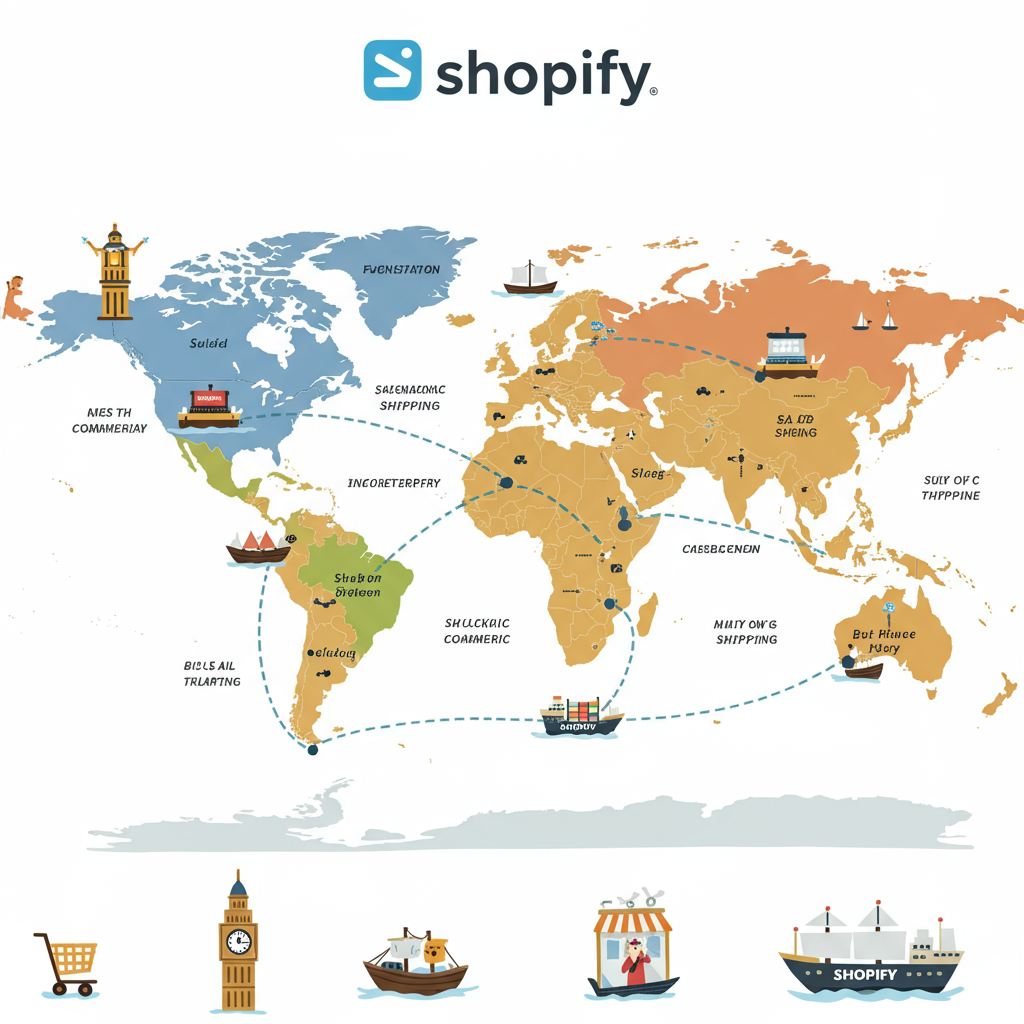A comprehensive guide for merchants looking to expand their reach beyond borders.
Hello fellow Shopify merchants! I’m excited to share some of my hard-earned insights on a topic that can seem daunting but holds immense potential: international shipping.
Expanding your e-commerce business globally is not just a dream; it’s a tangible opportunity to tap into new markets and significantly boost your sales.
However, I know firsthand that navigating the complexities of cross-border logistics, customs, and varying regulations can feel like a maze.
That’s precisely why I’ve put together this detailed guide, based on my own experiences and best practices I’ve observed in the Shopify ecosystem.
My goal is to equip you with a robust, actionable strategy to confidently ship your products worldwide, turning potential challenges into competitive advantages.
Let’s dive into the core pillars of a successful Shopify international shipping strategy.
First and foremost, I always emphasize the critical importance of thorough research and planning.
Before you even think about shipping, identify your target markets. Where is the demand for your specific products strongest?
Consider cultural nuances, purchasing power, and local consumer preferences. This initial homework is invaluable.
Next, delve into the import regulations of those chosen countries. Are there any product restrictions or specific certifications required for your goods?
Understanding these upfront can save you from costly delays, fines, or even product confiscation down the line.
Choosing the right shipping carriers and services is another cornerstone of your strategy.
Major players like DHL, FedEx, UPS, and even national postal services like USPS or Royal Mail, each have their strengths and weaknesses for international shipments.
I’ve found DHL to be exceptionally strong for global express deliveries, often providing excellent tracking and customs clearance support.
FedEx and UPS also offer reliable, expedited services, while national postal services can be more cost-effective for lighter, less time-sensitive items.
Compare their service levels – express versus standard – their tracking capabilities, and their insurance options.
If you anticipate significant volume, don’t hesitate to negotiate rates directly with carriers; you might be surprised by the discounts available.
Sometimes, a diversified approach, using different carriers for different regions or product types, proves to be the most efficient.
When it comes to shipping rates and pricing, transparency is absolutely key for customer trust.
You have several options: offering real-time calculated rates directly from carriers, which Shopify’s native features or apps can facilitate.
Alternatively, you could implement flat rates, which are simpler but require careful calculation to avoid over or undercharging.
Many merchants, myself included, find success with free shipping, but remember to factor those costs into your product pricing.
Tiered rates, based on order value or weight, can also be an effective way to manage costs while incentivizing larger purchases.
Always display your shipping costs clearly and upfront on your product pages and at checkout to prevent abandoned carts.
Customs and duties are often the most intimidating aspect, but they don’t have to be.
You need to decide between DDU (Delivery Duty Unpaid) and DDP (Delivery Duty Paid).
With DDU, the customer is responsible for paying duties and taxes upon arrival, which can lead to surprise fees and potentially abandoned packages.
I generally recommend DDP where possible, as it provides a smoother customer experience by collecting duties upfront, often through a Shopify app integration.
Crucially, use accurate HS (Harmonized System) codes for all your products. These international classification codes determine the duty rates and prevent customs delays.
Proper packaging and labeling are non-negotiable for international transit.
Your packages will endure a lot, so use durable materials and ample cushioning to protect your products.
Ensure all labels are accurate, clear, and include all necessary customs declarations and commercial invoices.
Double-checking recipient addresses and contact information is a small step that prevents big headaches.
Don’t overlook your international returns and exchanges policy.
It’s more complex than domestic returns, so clearly state who pays for return shipping and how duties are handled on returned items.
Sometimes, for low-value items, it might be more cost-effective to offer a partial refund or let the customer keep the item rather than processing a return.
Leverage Shopify’s powerful integration capabilities to streamline your operations.
Set up specific shipping zones for different countries or regions within your Shopify admin.
Integrate with shipping apps like ShipStation, Easyship, or even Shopify Shipping itself, which can automate label creation, tracking, and customs forms.
Explore multi-currency options to allow customers to view prices in their local currency, enhancing their shopping experience.
Finally, proactive customer communication is paramount.
Provide tracking numbers promptly, set realistic delivery expectations, and be transparent about potential delays.
Clearly explain your duty and tax policies on your website. Proactive communication significantly reduces customer support inquiries and builds trust.
Remember, international shipping is a journey of continuous optimization.
Start with a few key markets, monitor your performance, and refine your strategy based on feedback and data.
Consider partnering with a third-party logistics (3PL) provider if your international volume grows significantly; they can handle fulfillment globally, freeing up your time.
I hope these detailed insights provide a solid foundation for your Shopify store’s global expansion.
What are your thoughts on this article? I’m always eager to hear from fellow merchants and learn from your experiences.
Embrace the world, and good luck with your international shipping endeavors!






